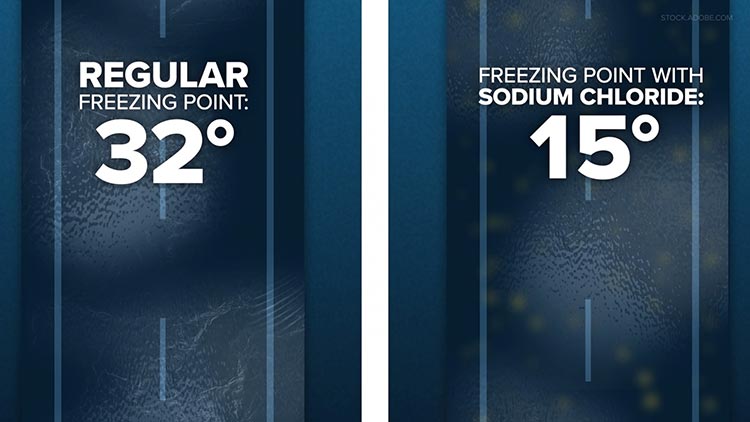"Salting" our Roads
Helping to understand ice melt and how it takes longer at a certain temperature.
The Question
Why does salt stop working when the weather gets too cold?
The Why
It all comes down to the chemical makeup of water and what salt is actually doing to prevent ice from forming.
To start out we need to look at water in its basic form. As a liquid the molecules in water are loosely packed and free flowing. This means it is able to run and flow freely without much resistance in itself.
As water reaches 32 degrees or below the molecules become more tightly packed. This tightening allows ice crystals to form, and that spells bad news for drivers.
To combat this formation, we will usually add salt or a brine solution to our roads. This material is not actually melting the ice by generating any heat, but is instead causing a chemical change in the composition of the water.
As salt molecules intermix with the water molecules they prevent tight bonds from forming in the solution. This prevents ice from forming, even as the liquid temperature of the solution falls below 32 degrees.
This effect has its limits though. While some effect may be seen as temperatures plummet, most of the work that can be done from salt stops as we drop under the 15-degree mark. After this point, the amount of salt needed to melt all the ice on our roads will become impractical to actually put down.
The process will also begin to take increasingly longer and longer periods of time. This means the salt could wash or blow away before the ice actually melts.


